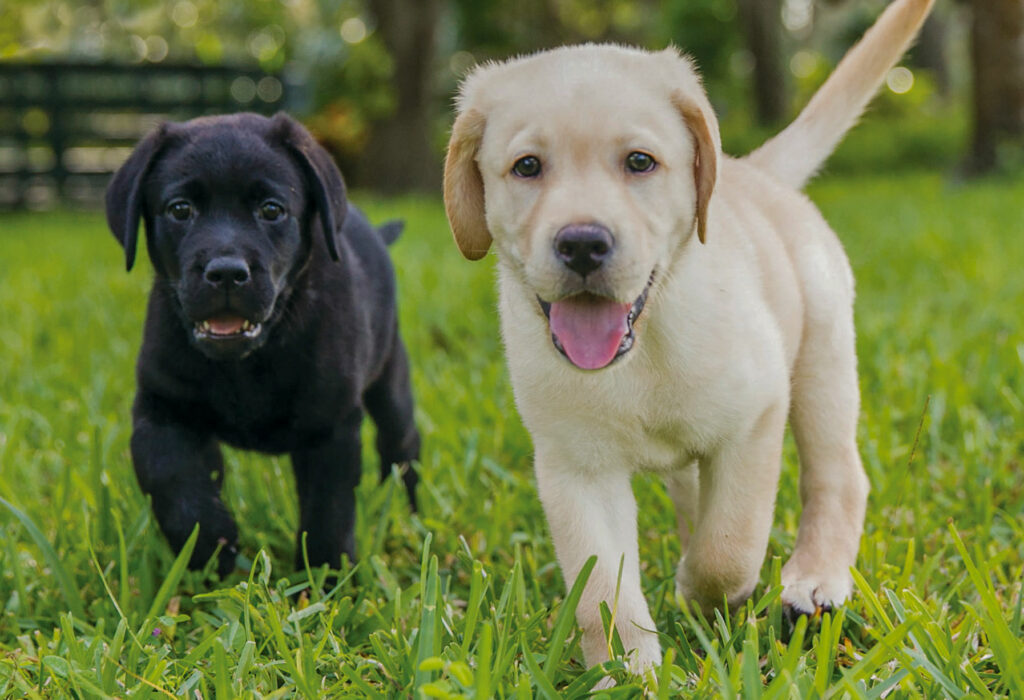Volunteers, Trainers and Dogs Share a Heart for Service
Brooklyn Shannon recently found herself sitting nervously in a small room behind a closed door at the Southeastern Guide Dogs (SEGD) facility in Florida. Fidgeting with dog treats in her hand, she waited anxiously to meet a new partner who could potentially change her life.
Since 2019, Brooklyn’s vision loss has been rapid and unforgiving. The heart-wrenching journey that has led her to this room began during a routine Lasik consultation. This busy wife, mom of a then 4-year-old, foster care volunteer and former pharmaceutical rep from Gray in East Tennessee was diagnosed with a rare, incurable eye disease that will result in blindness.
Unable to clearly focus on the door as it opened, Brooklyn called out to the beautiful 55-pound yellow Lab named Lolita who was already bounding into the room. Lolita wiggled quickly to Brooklyn’s side, excitedly greeting her new person and the treats. This was the beginning of brand new chapter in life for both of them.
Brooklyn describes losing her vision like a millionaire giving away $1,000 a day. “You’re not going to notice it so much until you get down to that last $10,000,” she says. “If you keep giving it away, it goes fast, so you notice it more quickly.” Brooklyn’s vision “account” is now nearly empty.
Fortunately, since meeting Lolita, a guide dog produced and trained through SEGD, Brooklyn can maintain a higher quality of life as her vision fails. Lolita, like all successful guide dogs, provides assistance beyond what any human could provide: 24-hours-a-day, day-after-day service. Essentially, Lolita’s sole purpose is to bring independence to the one she serves.
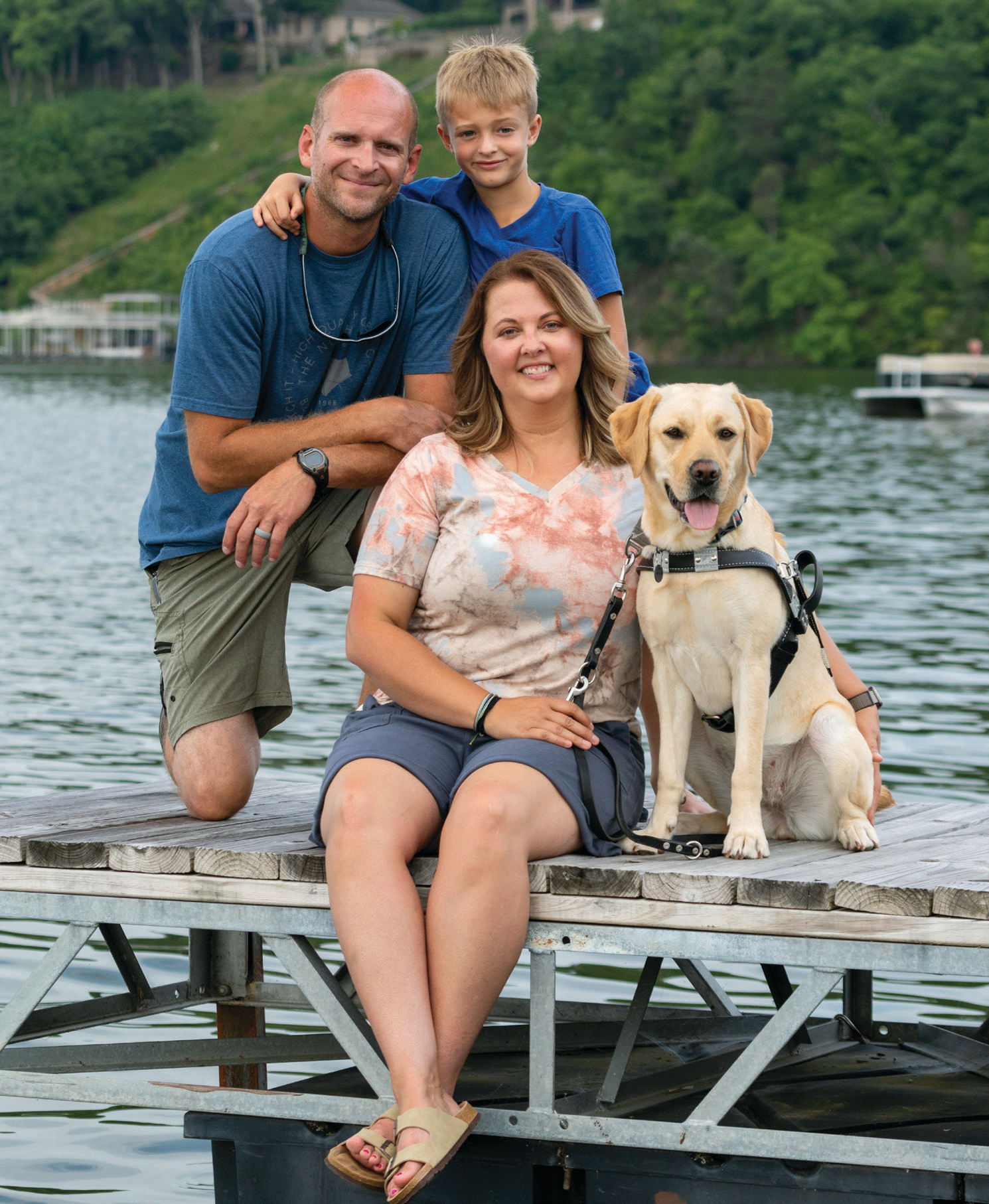
Another Tennessean who benefits from the gift of a Southeastern guide dog is Stefanie Mar-vin-Miller, a military veteran and Middle Tennessee State University student. Struggling with severe post-traumatic stress disorder (PTSD), Stefanie learned about SEGD through Sierra Delta, a veterans organization. “I applied to Southeastern Guide Dogs in February of 2018, got my dog, Leland, 100 days after my date of discharge from the military and held Leland for the first time in June of 2018,” says Stefanie.
“It sounds like a cliche,” Stefanie continues, “but Leland has made every difference in my life. I’m graduating from MTSU next spring, and I could not have gone back and graduated without him.
“My husband is no longer my caretaker; he is my husband, and we are able to just be married, enjoy our lives together and even start a family after I graduate. I couldn’t even dream of becoming a mom without Leland. I didn’t think that was in the cards for me before him.”
Transformative stories like Brooklyn’s and Stefanie’s are commonplace at Southeastern Guide Dogs. Established in 1982, SEGD develops and offers elite dogs who provide life-transforming services to people across the United States. This is only possible through a network of a veritable army of financial supporters, volunteers, breeders, puppy raisers and facility trainers.
Operating what SEGD calls the world’s most advanced service dog organization training facilities, the trainers prepare working dogs to serve people with disabilities, including vision loss, veterans with disabilities and children with significant challenges, including vision loss or the loss of a parent in the military. Best of all is the fact that all SEGD services are provided completely free.
Saying it takes a village to raise an SEGD from puppy to a successful graduate would be an understatement. Every memorable connection between an owner and SEGD guide dog begins with a puppy.
Muffy Lavens, media relations manager for SEGD, says the organization’s genetics and reproduction department tracks the genealogy of the “colony” of dogs whose puppies carry great destiny in their DNA. “This well-defined program has been created so our dogs have the best temperament, intelligence and health,” she explains.
“Some of our breeding lines go back about 30 years, but in order to keep inbreeding away from our colony, we collaborate with other assistance dog schools to diversify our genetics. We have been in the Assistance Dog International Breeding Cooperative (ABC) for eight years now, and it has helped bring in traits we would otherwise not have,” says Zuhey Medina-Gonzalez, director of genetic, reproduction and puppy care. “We whelp around 300 puppies a year.”
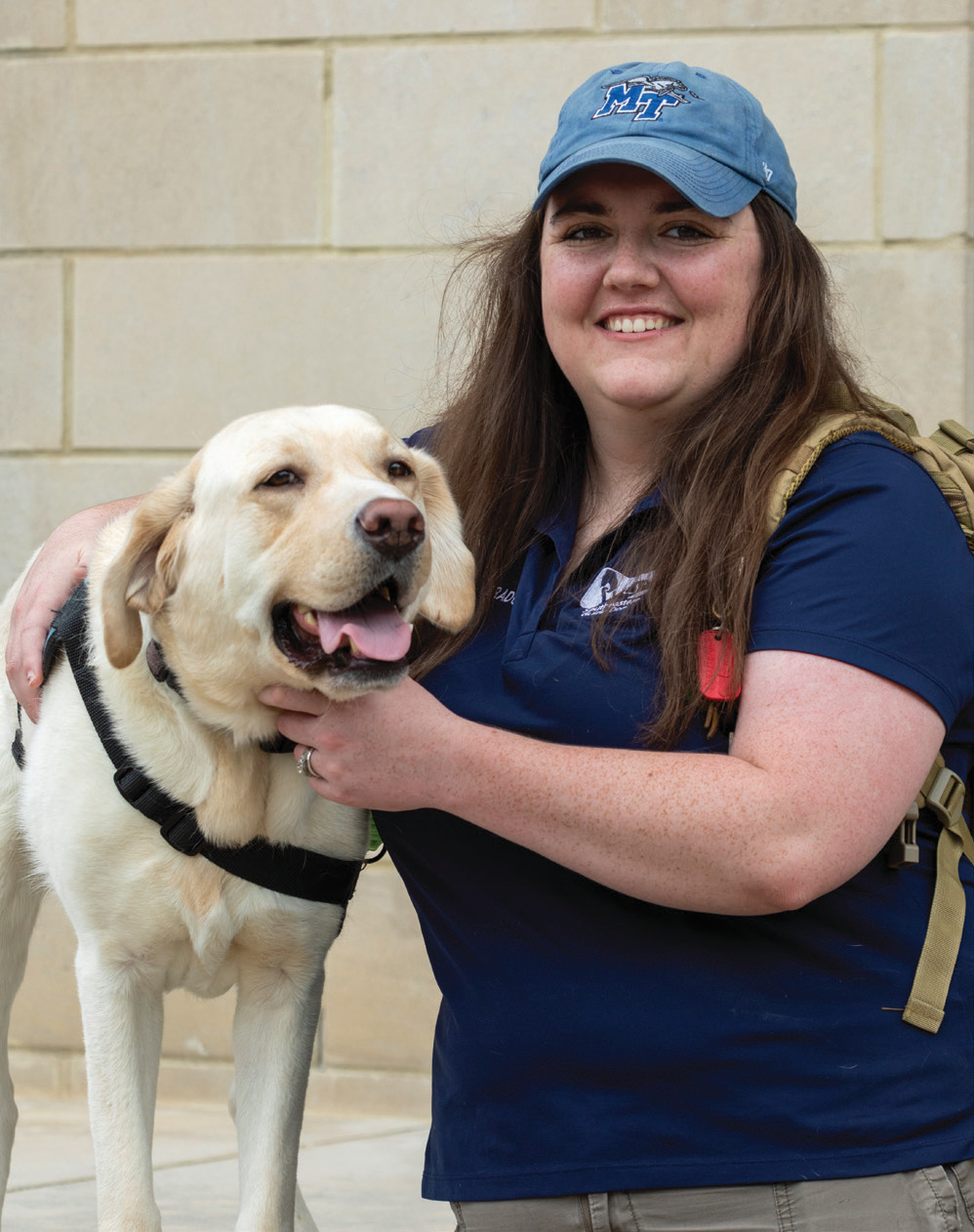
“Volunteers host our breeder dogs in their homes. The dogs come to campus to give birth and return to their host families,” explains Lavens. The puppies remain on campus until they are weaned. At that time they undergo assessments at the SEGD Puppy Academy before being placed with puppy raisers for their next steps in development.
The most involved group of SEGD volunteers are the puppy raisers. Puppy raiser groups are currently located in cities across the South, including Chattanooga and Nashville.
For the first year of training, the volunteer puppy raisers give the foundation of boundless love, broad experiences and careful direction to their charges. These incredible volunteers are crucial for the development of each puppy. At the end of a year, volunteer raisers return their pups to SEGD so that the more serious training can begin.
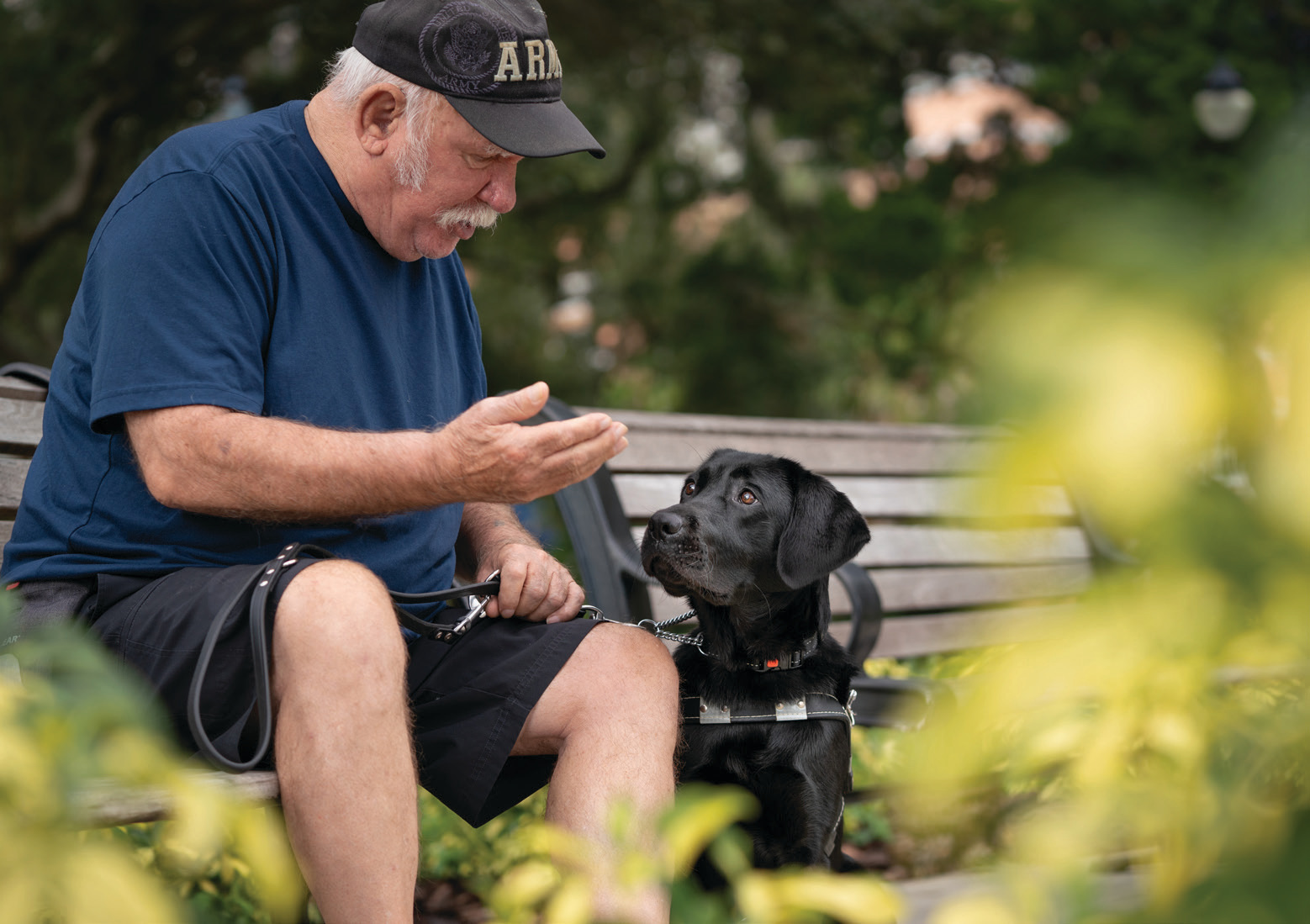
Continuing through more advanced training in the hands of SEGD trainers, each canine candidate finds its best path to service. Puppy raisers continue to get updates about their beloved trainees as the young canines advance through training phases. As the day approaches for dogs to join their lifetime owners, the proud puppy raisers are reunited with the new graduates … one last time to say goodbye. For the good of the new bond each working dog needs to have with its new owner, no contact between puppy raisers and service dog recipients is allowed for at least 90 days. Any future contact is at the discretion of the new owner.
Penny Love, principal at Culleoka Unit School, is one who has “volunteered for a broken heart,” lovingly raising puppies knowing she’d have to return them. “I have raised several pups,” she says. “Kaitlyn, a yellow Lab who was chosen for the breeding program; Kansas, who is now a facility therapy dog at Eielson Air Force Base; Trudy, who I just returned in May and is now training to be a service dog; and Higgins, who was released from the SEGD program because of the pandemic and is now my pet.”
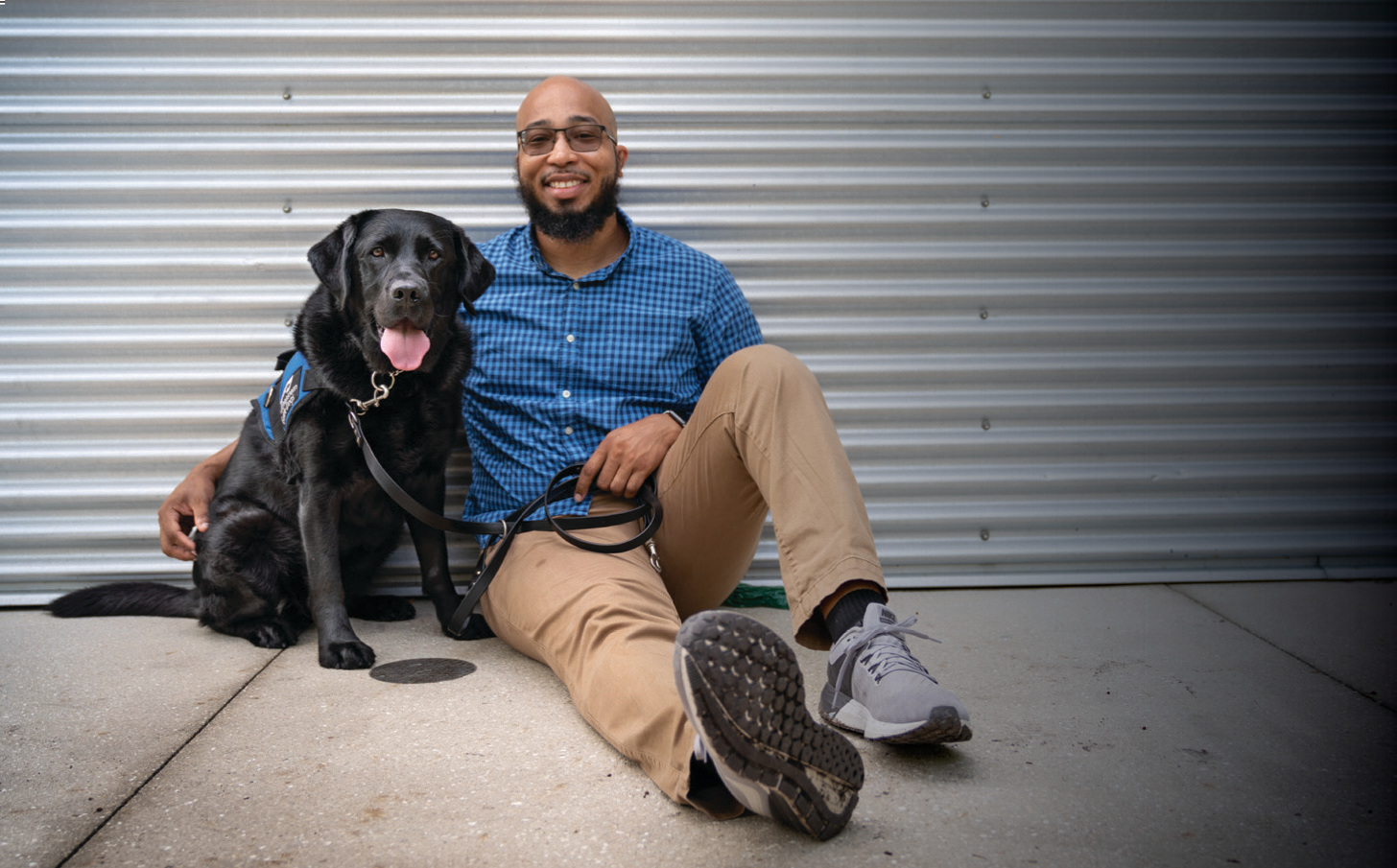
“I was nervous while training my first SEGD pup,” says Penny. “My fear was that I would ‘mess her up,’ but as I became more comfortable from hearing other stories, reading and rereading the manual, reaching out to my fellow puppy raisers and having “walk and talks” with my regional manager, I began to think, ‘I am doing the best I can with the knowledge bank I have,’ knowing that knowledge bank was growing and there were many people I could reach out to if needed.”
Taking the responsibility seriously, Love remarks that sacrifices sometimes have to be made when it comes to social engagements. “If my pup can’t go and it is too long to leave them at home in the kennel, I don’t go.”
Puppy raisers Tammy Algood and husband George Killgore can testify that it’s easy to bond with these engaging and talented youngsters. “The intelligence is evident from the instant you meet your puppy,” says Tammy. “They’re truly born with an eagerness to learn, work, give and love. They instinctively master new tasks and grasp new cues without hesitation. These pups are heroes long before they are matched with the people they’ll serve.”
George and Tammy believe entwining their lives with these special creatures has changed them as much as it has the puppies. Puppy raisers devote themselves entirely to teaching each puppy to maximize its potential to serve, but Tammy agrees that the education flows both ways. “They teach and serve us, too,” says Tammy.
“The dogs tell us what they want to do,” says Penny. “I have an opinion on my pups when they go in for training, but it is not always correct. Pups exhibit different behaviors with different people and different locations. The SEGD certified trainers know what it takes to become a guide or service dog or one of the other careers available to the pups.”
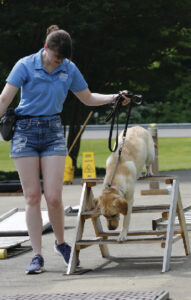
“Most trainers have some animal care, science or training background,” says SEGD Vice President of Operations Tammy Prouty. “The apprentice position is a three-year commitment. Each year includes shadowing, then being shadowed, then working independently — plus coursework, assessments and written tests. It is a very extensive curriculum and one that does not allow for cutting corners.”
Once a puppy comes in for “Freshman Orientation,” it’s carefully assessed to determine its best career path. According to Guide Dog Training Team Manager Marisa Blanco, trainers can really tell if a dog is going to succeed when they get to phase 3, or “junior year.” Some dogs will show signs of excelling even earlier. She says the quicker the bond with a trainer, the better the training results will be.
The eventual recipients of SEGD graduates also have a lot to learn. Like Brooklyn, all potential owners of these dogs first undergo extensive in-home visits and preparation, including evaluations about their walking paces, energy levels, home lives and lifestyles. Evaluators then return to SEGD headquarters to begin matching pups with similar speeds, liveliness and interests to owners. After that, potential owners must themselves report to the SEGD facilities to learn all the responsibilities that will be theirs once they receive their canine companions. “They tell you, ‘You are the smarter one in this team,’” says Brooklyn. “Your dog doesn’t know what you want to do; you have to communicate every move. It’s like driving a car: You have to say, ‘Forward,’ ‘Back,’ ‘Stop.’ And you have to decide what words you want to use to teach your dog to target specific things. I decided to use the command, ‘Food!’ to tell Lolita to get me to, for instance, the food court at the mall. It takes about 10 minutes to teach her a new command; that’s how smart they are.”
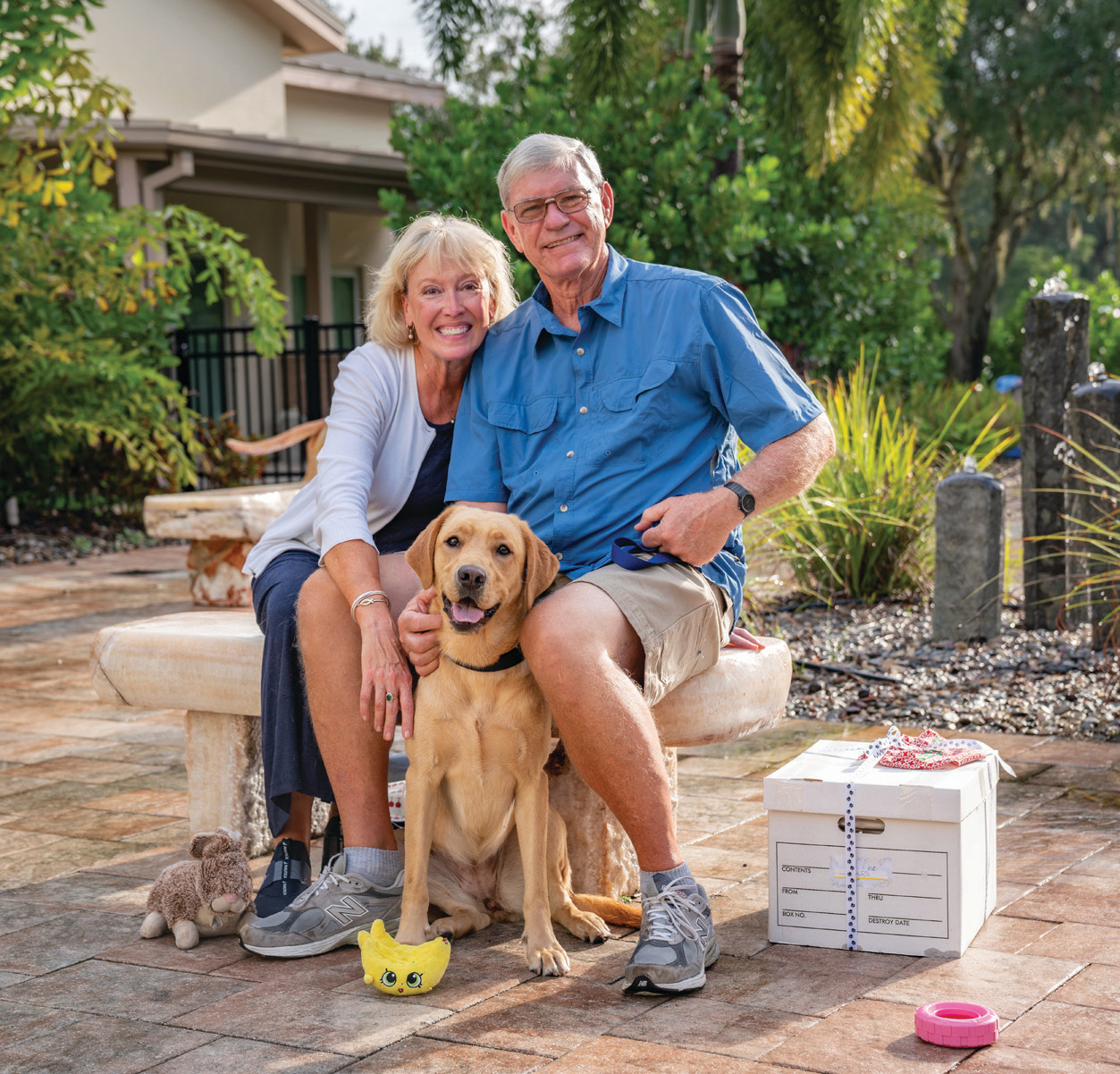
Brooklyn also stresses that owners must carry out all responsibilities for caring for their dogs so that the dog’s bond and attention remain laser-focused on the one who needs the assistance. “All good things come from Mommy: food, water, potty breaks, treats, rest and play,” says Brooklyn. With a husband and young son sharing her home, she makes sure all family members understand that when Lolita is in harness and actively working, Lolita must be ignored. Only Brooklyn can give commands. “Out of harness” is rest and play time, and then Lolita can get hugs and enjoy play with her buddy Camden, Brooklyn’s son.
Seeing the freedom, love and joy these extraordinary dogs bring to their families, how can a volunteer bear to give up a beloved puppy who has been the central concern of your life for a year?
“I won’t sugar-coat it. It is hard — very hard,” says puppy raiser Love. “The day the pup is placed in your arms, the pages of the book begin to turn, and the pages turn more quickly as you near the end of your time together. With each pup I turn in, I think ‘I cannot do this again. This physically makes my heart hurt’ … and then I immediately get another pup to raise. And that hole in your heart? It begins to heal. Nothing ever takes the place of the pup you turn in, and each holds a special place in your heart, but new puppy breath and kisses do help mend that broken heart.
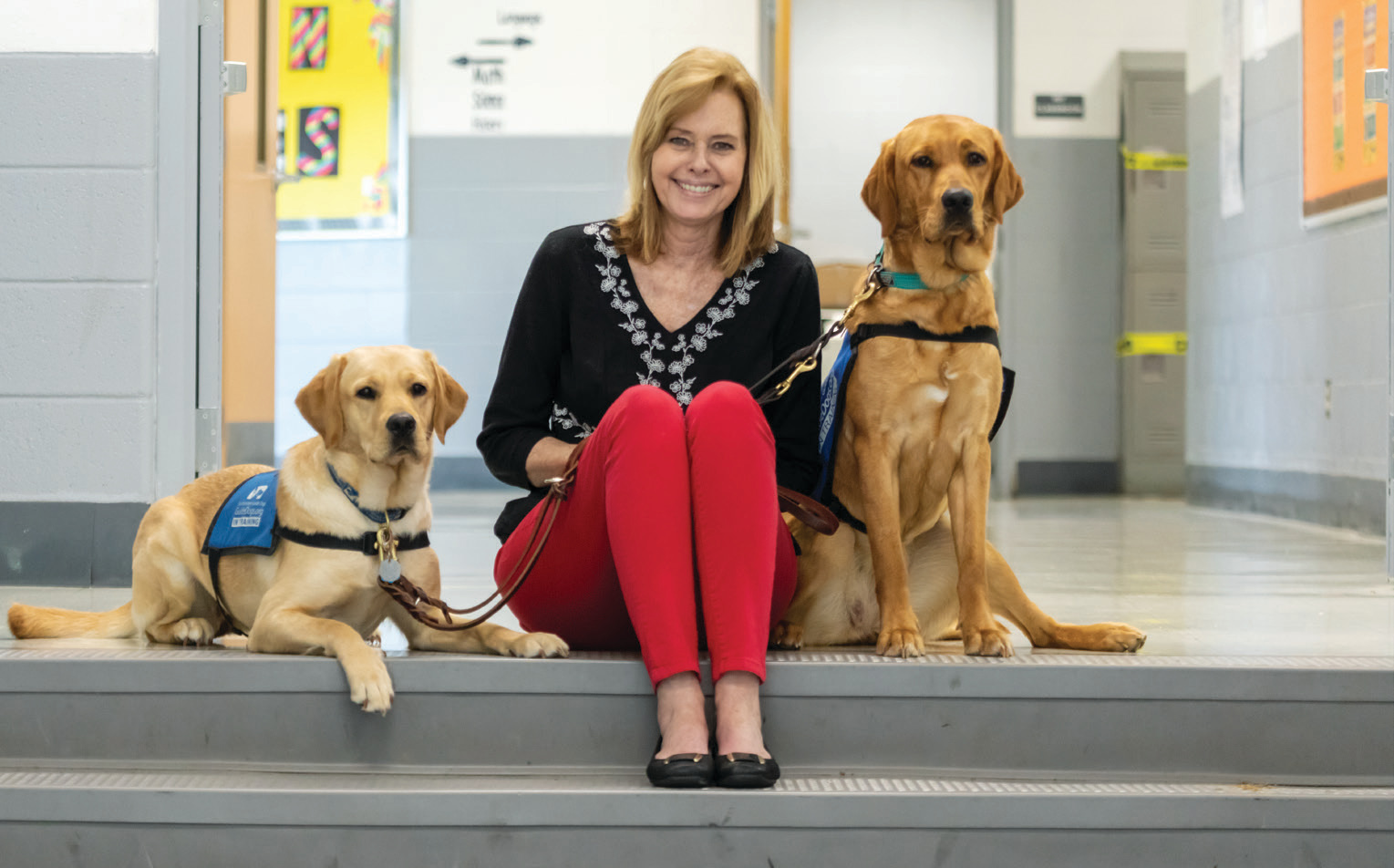
“New adventures await, as each pup is different. You have helped the pup you just delivered to SEGD grow into a well-behaved, confident dog ready to take on the next phase … so someone can benefit from that solid foundation you built.
“I can tell you this: Not one pup I’ve turned in looked back at me as the trainer led them away. These pups are ready to take on their next phase. While difficult, we humans need to take a lesson from the pups and do the same.”
How can you help?
Donations
Southeastern Guide Dogs relies completely on private donations.
Sponsor a puppy
For as little as $19 a month, you can sponsor a puppy and follow the year-long journey as the dog grows up with a puppy raiser and prepares to head back to campus for advanced skills training. Puppy sponsors get regular “pupdates” along with photos plus the Southeastern Guide Dog calendar, which is mailed each fall.
Become a puppy raiser
To find out more about what it takes to raise a puppy, please check out the puppy raiser information on the SEGD website.
For more information about Southeastern Guide Dogs, puppy raising or supporting the organization in other ways, visit GuideDogs.org.



